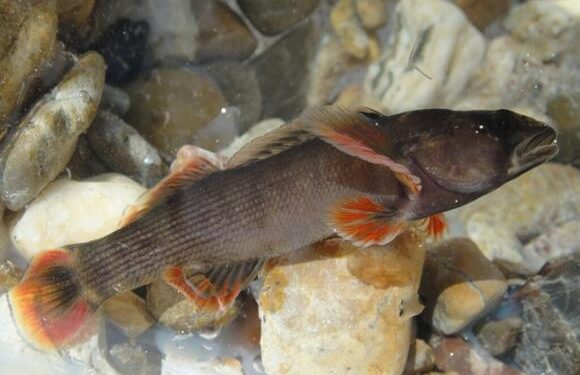The upper Little Red River’s endangered species, such as the yellowcheek darter, are set to receive a significant boost in recovery efforts thanks to a $2.2 million grant that Arkansas will utilize. The funds will be allocated to support the conservation of these vulnerable species and their habitats, ensuring their survival for future generations.
On Monday, the U.S. Fish and Wildlife Service disclosed that Arkansas has been granted $2.2 million from the federal government to aid in the acquisition of land for the purpose of recovering endangered species.
According to a press release, 19 states and Guam will receive a total of $48.4 million in grants to fund land acquisition and conservation planning projects. These projects will cover over 23,000 acres of habitat for 80 at-risk and listed species through the Cooperative Endangered Species Conservation Fund.
According to a legislative report, the project will receive a total of nearly $3.1 million, including the $2.2 million grant that was applied for in January. Partner funds will contribute over $27.75 million towards the project, with the Arkansas Game and Fish Commission providing $80,000. Additionally, other sources will contribute $827,500 to the project.
The Arkansas initiative has its sights set on the revival of the yellowcheek darter and the speckled pocketbook, two species of fish and freshwater mussels that are unique to Arkansas. Additionally, the initiative aims to support the conservation efforts of the northern long-eared bat, a species found across 37 states and eight provinces in North America.
Martha Williams, the Director of Service, expressed her gratitude towards the Endangered Species Act for providing crucial funding that will aid in the conservation of the most endangered wildlife and their habitats. Additionally, this funding will help to establish partnerships between various entities such as federal, state, and local governments, private landowners, and communities.
“The America the Beautiful initiative aims to conserve, connect, and restore 30% of the nation’s lands and waters to protect biodiversity, reduce extinction rates, and promote collaborative restoration efforts. These grants are in line with the Biden-Harris administration’s goal to support this initiative and make it a reality.”
According to a press release, CESCF grants play a significant role in supporting state and territorial programs dedicated to conserving and recovering federally listed and at-risk species on non-federal lands. Authorized by Section 6 of the Endangered Species Act and partially funded through the Land and Water Conservation Fund, these grants contribute millions of dollars each year to this important cause.

